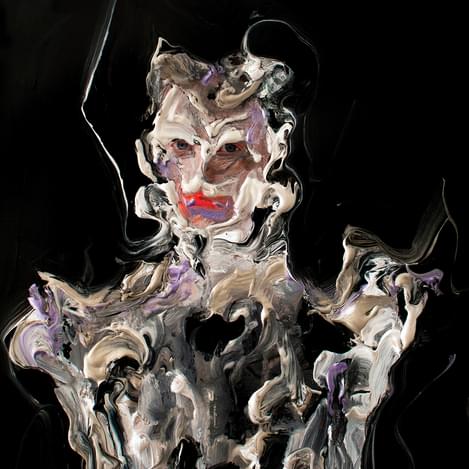With Ugly Season, Perfume Genius displays his commitment to discovery
"Ugly Season"

Fans of Hadreas’s work thus far may miss his more conventional vocal performances and pop-craft, particularly given the accessibility of his last release, 2020’s Set My Heart on Fire Immediately. Even approached as a free-standing project, however, Ugly Season is a sublime and evocative sequence, Hadreas and producer-instrumentalist Blake Mills breaking important and impressive ground.
“Just a Room” launches with panoramic synths, soon transitioning into a minimalistic blend of tinkly piano notes and string accents, Hadreas offering a palimpsest of vocal hums. As the piece nears completion, Hadreas’s hums grow breathier, with synths and strings swelling in crescendo. “Herem” opens with a classically intoned mix of mellotron and synths, later segueing into bass-y rumbles juxtaposed with a trebly beep/beat that resembles a heart monitor treated with various effects. While Hadreas’s voice is more ambient than pop-centric, his tremulous delivery recalls earlier outings, such as 2012’s Put Your Back N 2 It and 2014’s Too Bright.
“Teeth” is built around a more pop-aware vocal. Still, between verses, the track’s instrumentation is intricate and more classically oriented than we’ve heard from Hadreas (and Mills) previously. “Pop Song,” on the other hand, captures a relatively buoyant side of Hadreas. His gossamer vocal, floating above a garage-y beat, is accented by glitchy synths and flurries of piano. “Scherzo” further accentuates the experimental nature of the album, spotlighting Alan Wyffels’ cerebral piano runs, a raspy clarinet part, and background sounds that wouldn’t be out of place on Claire Rousay’s recent work.
The album's title track revolves around a reggae vibe, Hadreas offering a murky baritone vocal reminiscent of swan-song Bowie. On the almost 9-minute-long “Eye in the Wall,” Matt Chamberlain’s grounding percussion parts are contrasted with Hadreas’s aerial voice, bringing to mind Radiohead’s career-defining reconciliations of earthy rhythms and Thom Yorke’s celestial vocals. As the piece unfolds, it morphs into a fete of alternately swirling and sustained synths, increasingly adventurous percussion parts, and mercurial shifts in tone (from pastoral to agitated to segments that stir a sense of impending danger).
While Ugly Season mostly demonstrates Hadreas’s ability to facilitate atmospheric and instrumental contexts, the dystopian “Hellbent” is a distinct foray into pop noir à la mid-career Zola Jesus or an apocalyptic PJ Harvey. Hadreas displays his versatility as a singer, navigating a complex timbre – staccato, gravelly yet euphonic. Mills’ guitar is drone-y, mechanistic, conjuring the textures of U2’s Zooropa. Chamberlain’s drum part is erratic yet contained, flighty yet oddly metronomic. Closer “Cenote” serves as an appropriately stripped-down coda, a mix of sonorous piano chords and synth-y strings.
Ugly Season borrows from classical approaches, chamber- and baroque-pop templates, and the diverse canon of industrial/dystopian music. While the set may not feature the instantly infectious melodies of previous albums – frequently occurring as a soundtrack or score rather than a collection of songs, per se – Hadreas’s voice is integral to the project and employed in ways that illustrate the breadth of his talent. His musical contributions, too, highlight his gifts as an instrumentalist. Ugly Season confirms Hadreas’s commitment to discovery and resistance to reiteration.
Get the Best Fit take on the week in music direct to your inbox every Friday

Tunde Adebimpe
Thee Black Boltz

Julien Baker & TORRES
Send A Prayer My Way

Bon Iver
SABLE, fABLE





